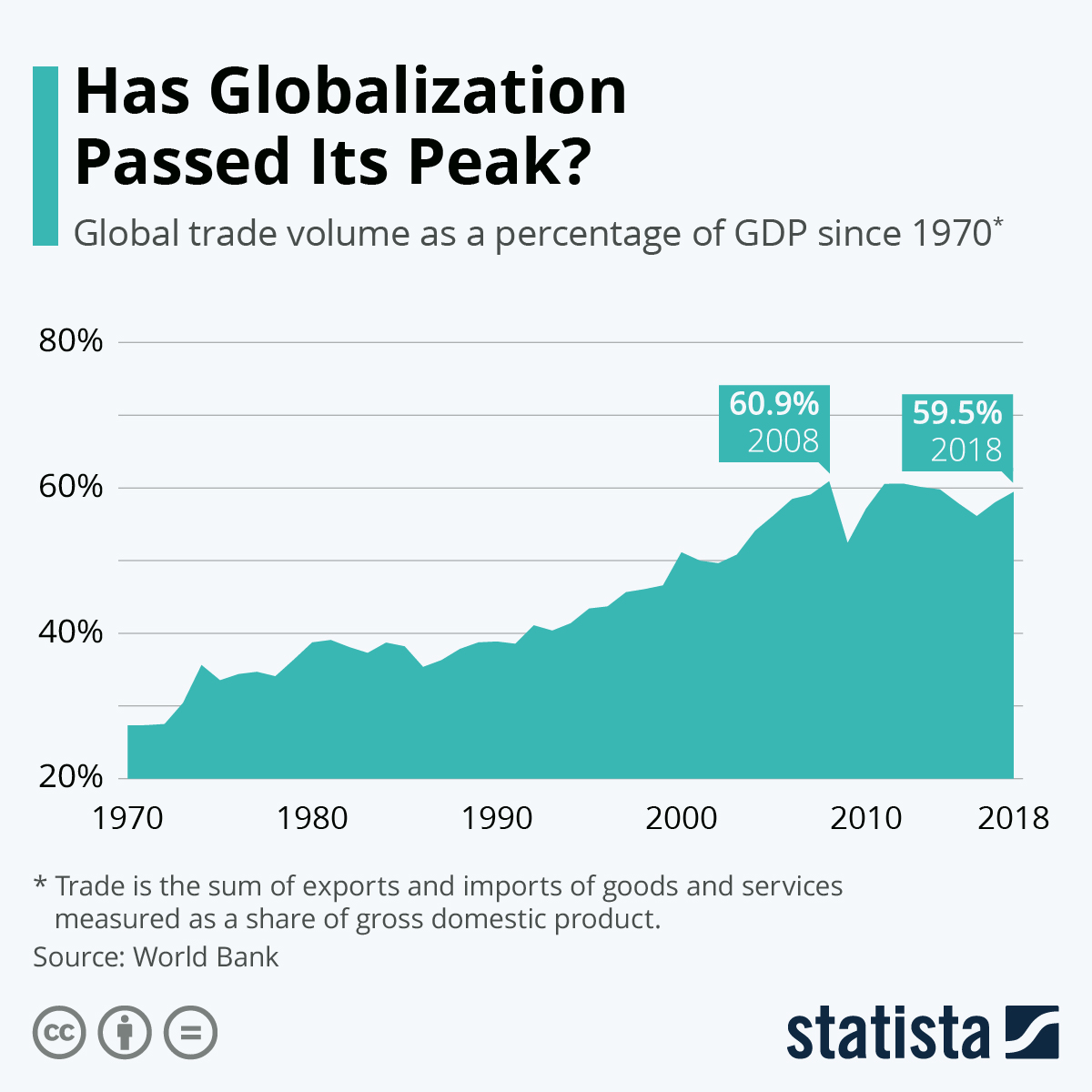Accounting & Finance
What Is The Future Of Globalization?

What is the future of globalization? Is it Globalization 5.0, virtual nationalism, or something else? All businesses can use globalization to their advantage. So for answers on how and what companies need to know, we turn to the World Economic Forum’ (WEF) whitepaper, Four Futures for Economic Globalization.
Unprecedented Challenges Ahead
The introduction of the Four Futures of Economic Globalization is full of not-so-positive descriptive words about the current state of globalization and the challenges we’re facing – most of which we’re created. However, we found it essential to keep reading the whitepaper until the end.
Globally, there’s been a convergence of issues like climate change competing for our attention. Left unchecked and with no clear plan for dealing with them, science tells us there will be devasting consequences for future generations and all life on earth. The events deserving of our attention and resolution right now include the following:
- Ongoing pandemic
- Ukraine war
- Climate, energy, and food crises
The pandemic revealed our overreliance on just-in-time supply chains and interdependent economies. Plus, globalization has created some wins with organizations outsourcing processes to developing nations and thus creating jobs and rising income levels. However, while business has flourished, globalization has created an unequal distribution of wealth, and dirty production and waste have been dumped on poor countries.
DW says the global share of trade peaked in 2008 then there was the GFC and Great Recession, in which business has either plateaued or dropped.
A rise in protectionism has seen some nations gradually shift away from global collaboration and frameworks to solve global issues collectively. Some countries have changed policies and have chosen to go it alone with their own agenda to manage security, sustainability, and economic disruption.
However, there is less focus now on just physical boundaries due to the rise of virtual economies.
The convergence of virtual and physical economies and accelerating digitalization have created new political and economic rivalries for controlling technologies and networks. Hence the uncertainty of the future of globalization.
Four Futures of Globalization
Returning the WEF whitepaper, it focuses on creating conversations on what globalization may look like by 2027. The scenarios called the four futures to include the following:
- Globalization 5.0 – reconnection
- Analogue Networks – virtual nationalism
- Digital Dominance – agile platforms
- Autarkic World – systemic fragmentation
Globalization 5.0 – reconnection
Reconnecting or mutual collaboration of Governments committed to frameworks designed to solve global problems is Globalization 5.0. However, for this future to happen, there must be a paradigm shift for some nations keen to go it alone.
If global cooperation does find its way, we can look forward to sharing the use of the new technologies of Industry 4.0. Trading as a business will include the accelerated adoption of blockchain, digital currencies, and DeFi. There will also be an acceleration of AI and improvements in Fintech, Edtech, Healthtech, Greentech, and more. Expect compliance with international data policies and security standards.
Workforces will be more global, too, with remote working and project-based assignments, i.e., more freelancing, enabling incomes derived from international sources. Plus, before long hybrid workers will become the norm.
Globalization 5.0 will have challenges as rapid digital adoption leaves many businesses behind. However, sharing global challenges is arguably the best outcome for stability and peace.
However, the world will look very different should any of the three other possible paths of globalization occur, including from scenario 2 – Analogue Networks – virtual nationalism from WEF’s Four Futures of Economic Globalization whitepaper.
Analogue Networks – virtual nationalism
The rise of mistrust and the need for control gives the scenario of virtual nationalism a chance of happening.
Already we’re witnessing Governments seeking greater control over tech and virtual networks. Some nations are using regulations that are often incongruous and conflicting with other countries’ rules. Tech firms, particularly those with global digital platforms, will struggle to remain operational in an environment full of mistrust.
Protectionism will also see producers of electric cars, medicine, and electronics focus on regional markets where business is straightforward. Over time some regions will advance faster with high-tech and skilled labor while nations will stagnate and make do with fewer resources, knowledge, and investment.
Vulnerable nations will suffer the most as countries look inwards and care only about what they can control.
Global challenges like climate change, health, and education will lack shared commitment, and innovation will also be regionalized. Expect to see a more significant divide between poor and wealthy nations.
Digital Dominance – agile platforms
Scenario three is about the dominance of the digital economy and global digital platforms for everything. All services will be “as a service,” and there will be a burst of international tech-enabled work and cooperation. However, the downside to accelerating digital adoption is not all nations will stay the course.
Keeping up so you’re not left behind becomes the biggest challenge for developing nations. Plus, more demand for extractive resources will see a power play from which only the larger local economies benefit.
Industry 4.0 dominates business in this scenario, with the prominent tech giants holding power, which some nations see as a threat.
Are you ready for scenario four – an Autarkic World of systemic fragmentation?
Autarkic World – systemic fragmentation
In this scenario – it’s everyone for themselves, i.e., it’s all about self-sufficiency. But there hasn’t been a country that has achieved it. Plus, smaller nations reliant on exports and global supply chains will never achieve it, and in an autarkic world, they will suffer the most. Trade restrictions and a reduction in the flow of capital and investment across borders challenge small local economies with small populations. Expect company bailouts and a rise in the nationalization of strategic industries, e.g., utilities and datacomms for security.
Forget cooperation on climate change initiatives. Expect less freedom of the press and speech and greater control of movements.
Last Words
What do you make of the four scenarios? Read the whitepaper to get the complete picture of what each future could look like.
Recent events like the pandemic and the Ukraine War have strangled supply chains, forced up prices, caused energy and now food crises, and put fear in just about everyone. The DW article suggests a reversal of offshoring to onshoring or nearshoring. Also, a shift away from critical dependencies on suppliers from nations that are not like-minded.
What is the future of globalization? It really is anyone’s guess. As someone famous once said Prepare for the worst, hope for the best.
We know entrepreneurs love challenges, and generally, businesses can use globalization to their advantage.










